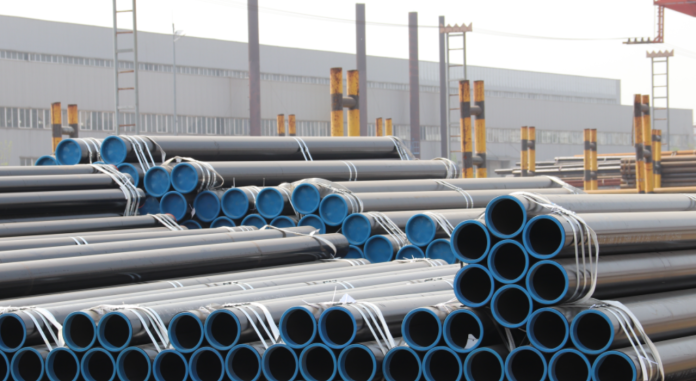The European popular EN 10219 is vital for regulating the requirements of cold-welded structural tubes made from non-alloy and first-class-grained steels without warmness treatment. This well-known outlines essential factors inclusive of dimensions, shapes, shipping situations, and allowable deviations from dimensional and form tolerances, making sure that welded tubes meet brilliant standards.
EN 10219 is particularly critical in the production of steel systems and widespread civil engineering applications, which include pipelines for transporting fluids like oil, fuel, and water. Using specifying mechanical property requirements, the same old ensures that these tubes can resist the pressures and stresses related to fluid transportation. Furthermore, en 10219 encompasses the construction of technique pipelines, energy pipelines, and ducts, making it versatile across numerous industries.
Significance of the EN 10219 Standard for the Construction of Pipelines Transporting Fluids
The EN 10219 general is pivotal within the construction and layout of welded structural tubes, mainly the ones utilized in pipelines transporting fluids, which include oil, gasoline, and water. Hooked up by way of the ECU Committee for Standardization (CEN), this standard outlines crucial requirements associated with dimensions, shapes, tolerances, and mechanical properties of non-alloy and first-rate-grained steels. Its importance lies in ensuring safety, reliability, and overall performance, which are critical for the integrity of fluid transportation structures.
Assurance of Structural Integrity
One of the most considerable components of EN 10219 is its recognition of the structural integrity of welded tubes utilized in pipelines. Via stringent mechanical necessities, the usual guarantees that the tubes can withstand excessive pressures and dynamic hundreds normally experienced at some point of fluid transportation. This reliability minimizes the chance of failures consisting of leaks or ruptures that could have catastrophic consequences for both the environment and public protection.
Standardization of Dimensions and Shapes
EN 10219 gives precise hints regarding the size and shapes of structural tubes, which can be essential in the production procedure. Standardization enables the compatibility of different additives, bearing in mind less difficult meetings and protection of pipelines. With described specifications, producers can produce pipes that meet the important criteria for production initiatives, ensuring uniformity and reducing the probability of design discrepancies. This uniformity is critical in big-scale tasks where heaps of pipes are required.
Mechanical Properties Requirements
The mechanical properties laid out in EN 10219 are vital for the overall performance of welded tubes. These residences include yield energy, tensile electricity, and effect resistance, which at once affect the tubes’ ability to deal with numerous operational stresses. By making sure that substances meet those requirements, the standard enhances the general durability and longevity of pipelines. In harsh environments, in which temperature and stress fluctuations can arise, these mechanical homes are important for preventing failures and ensuring non-stop operation.
Impact on Safety Regulations
Compliance with EN 10219 substantially impacts safety regulations within the pipeline production industry. The usual facilitates to establish a benchmark for satisfactory, main to the implementation of rigorous protection measures. Regulatory bodies often reference EN 10219 while setting hints for pipeline production and upkeep. As a result, adherence to this well-known policy no longer only fulfills prison responsibilities but additionally reinforces a tradition of protection inside companies concerned with fluid transportation.
Enhancing Environmental Protection
Environmental concerns have become increasingly crucial in pipeline creation, and EN 10219 addresses this need with the aid of promoting the use of long-lasting materials that limit the threat of spills and leaks. By ensuring that welded tubes meet strict standards for strength and integrity, the potential for environmental infection from risky fluids is drastically decreased. This proactive technique aligns with international sustainability dreams and highlights the obligation of the industry to defend herbal sources.
International Recognition and Compliance
EN 10219 is recognized no longer only inside Europe but additionally the world over, making it a standard reference for pipeline construction across borders. Compliance with EN 10219 can beautify a company’s popularity inside the global marketplace because it demonstrates a commitment to best and protection. Many worldwide projects now require adherence to this preference, making it essential for organizations engaged in worldwide fluid transportation tasks. This popularity also fosters collaboration among producers and clients worldwide.
Cost-Effectiveness through Compliance
At the same time as adhering to EN 10219 can also involve initial charges for producers and creation businesses, the long-term advantages regularly outweigh those fees. By making sure that pipelines are constructed to the very best requirements, agencies can lessen protection charges and the probability of catastrophic disasters, which may be extraordinarily expensive. Moreover, dependable pipelines beautify operational efficiency, allowing for higher aid control and reduced downtime. Ultimately, compliance with EN 10219 can lead to sizeable savings over the lifecycle of the infrastructure.
Summary
The importance of EN 10219 preferred for the development of pipelines transporting fluids can’t be overstated. It plays a crucial function in ensuring the structural integrity, protection, and environmental safety of fluid transportation structures. As industries continue to conform and face new demanding situations, the relevance of EN 10219 will simplest grow. Adherence to EN 10219 is crucial for constructing the infrastructure wished for sustainable improvement and useful resource management.










